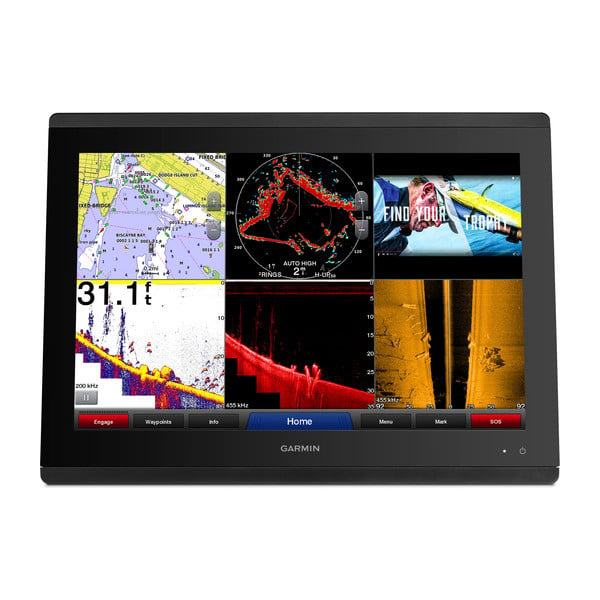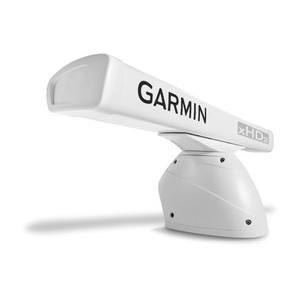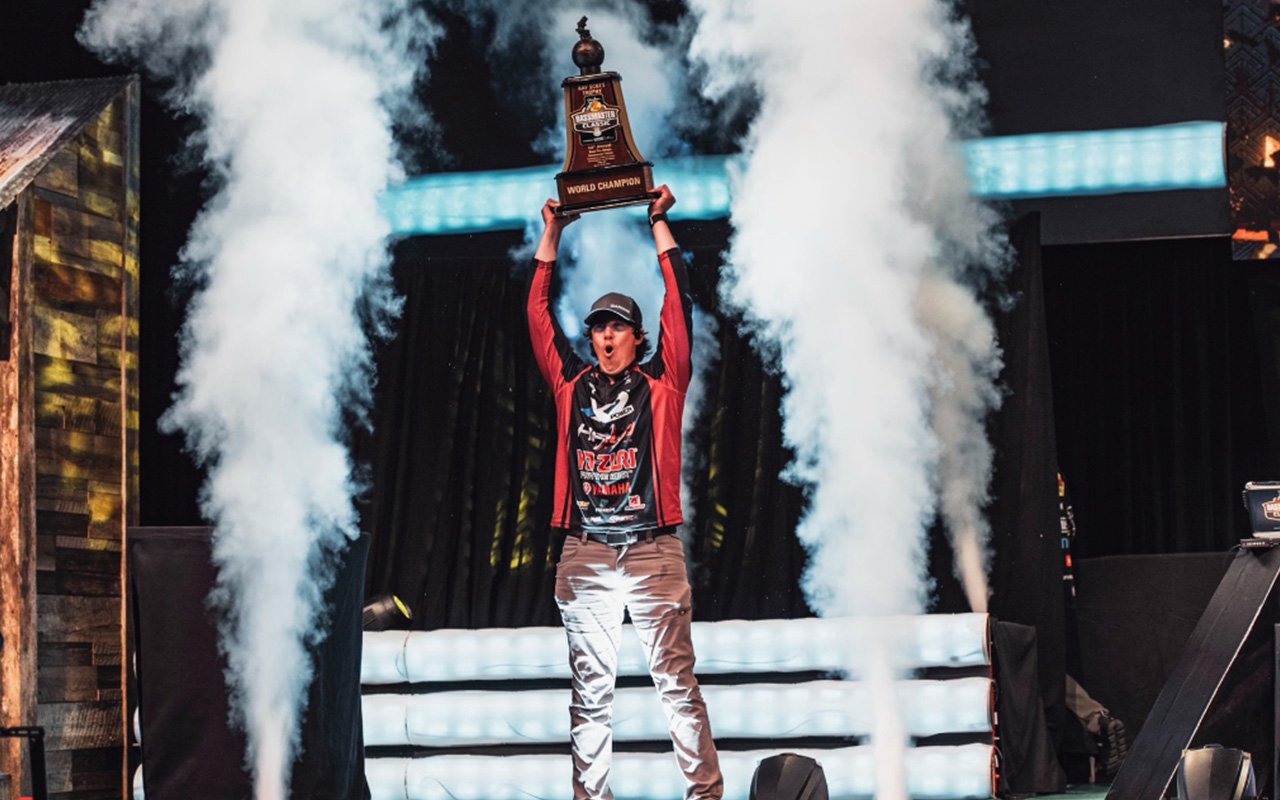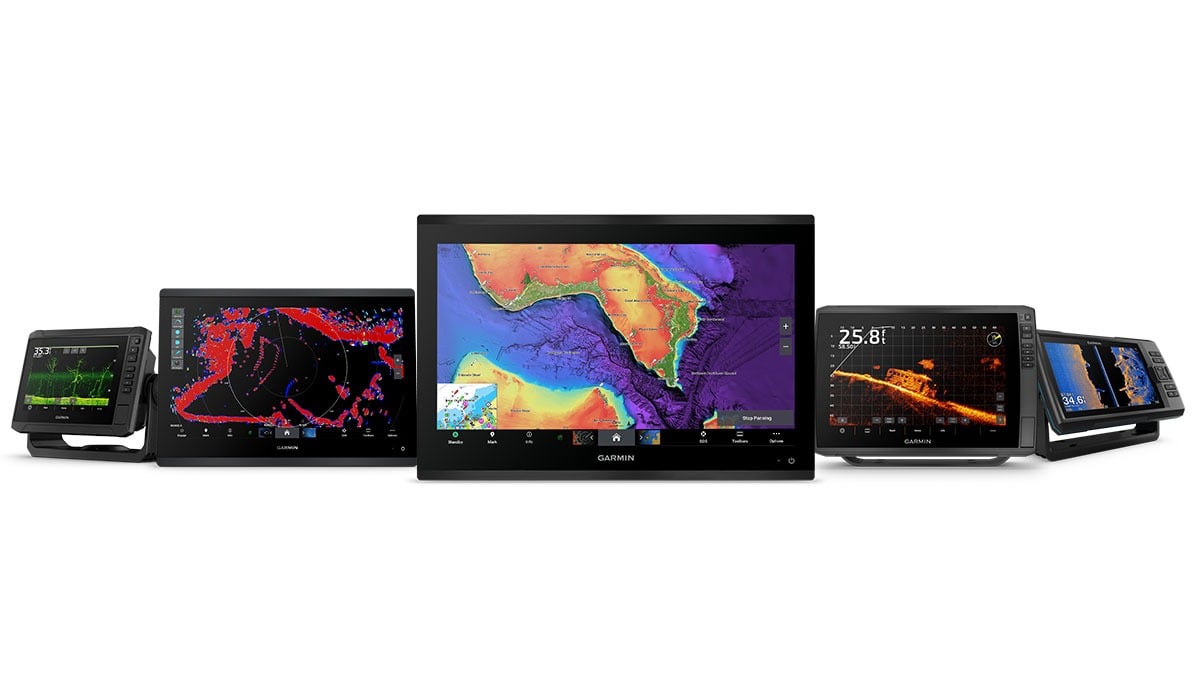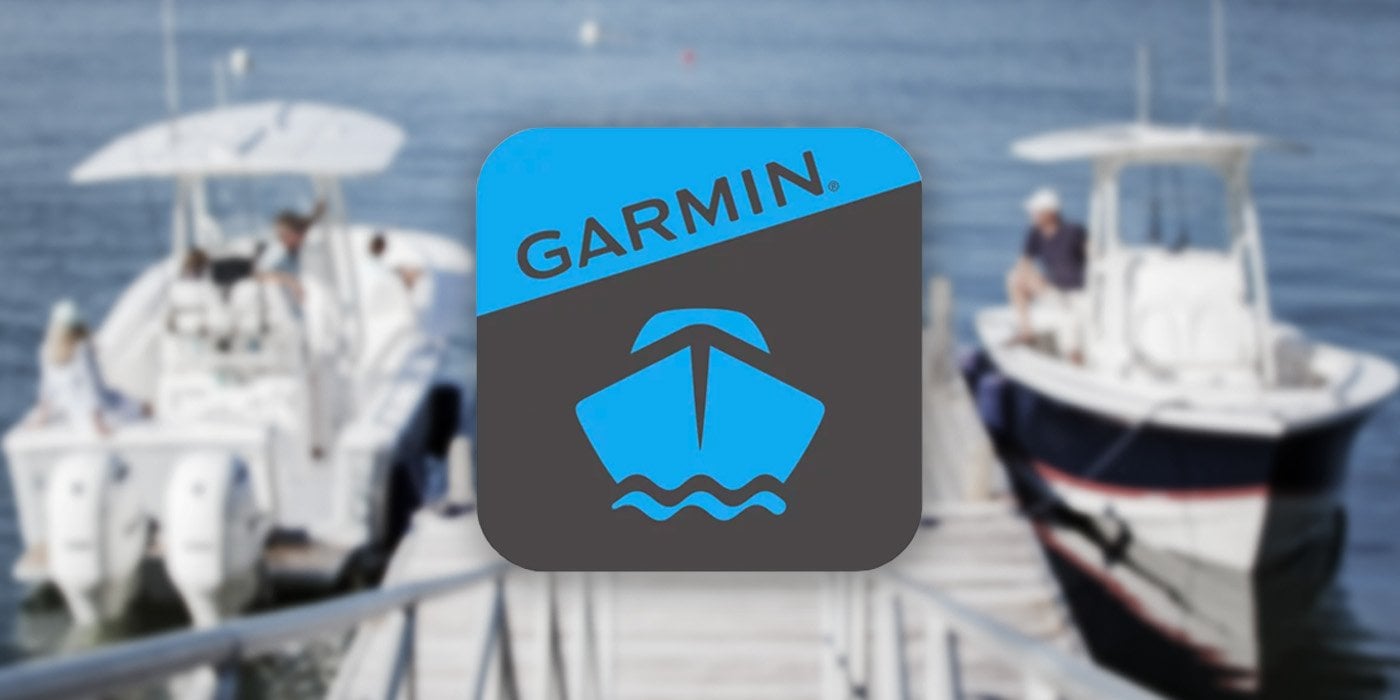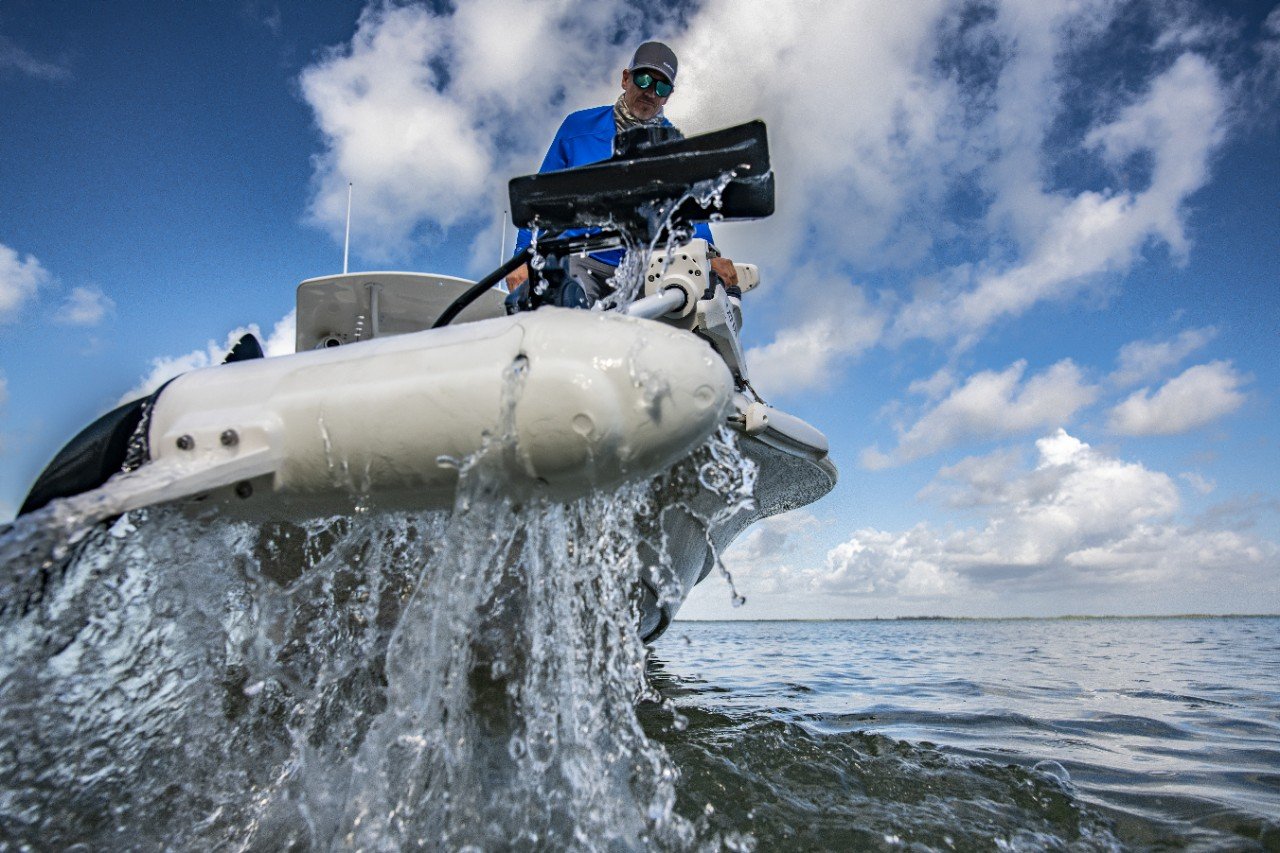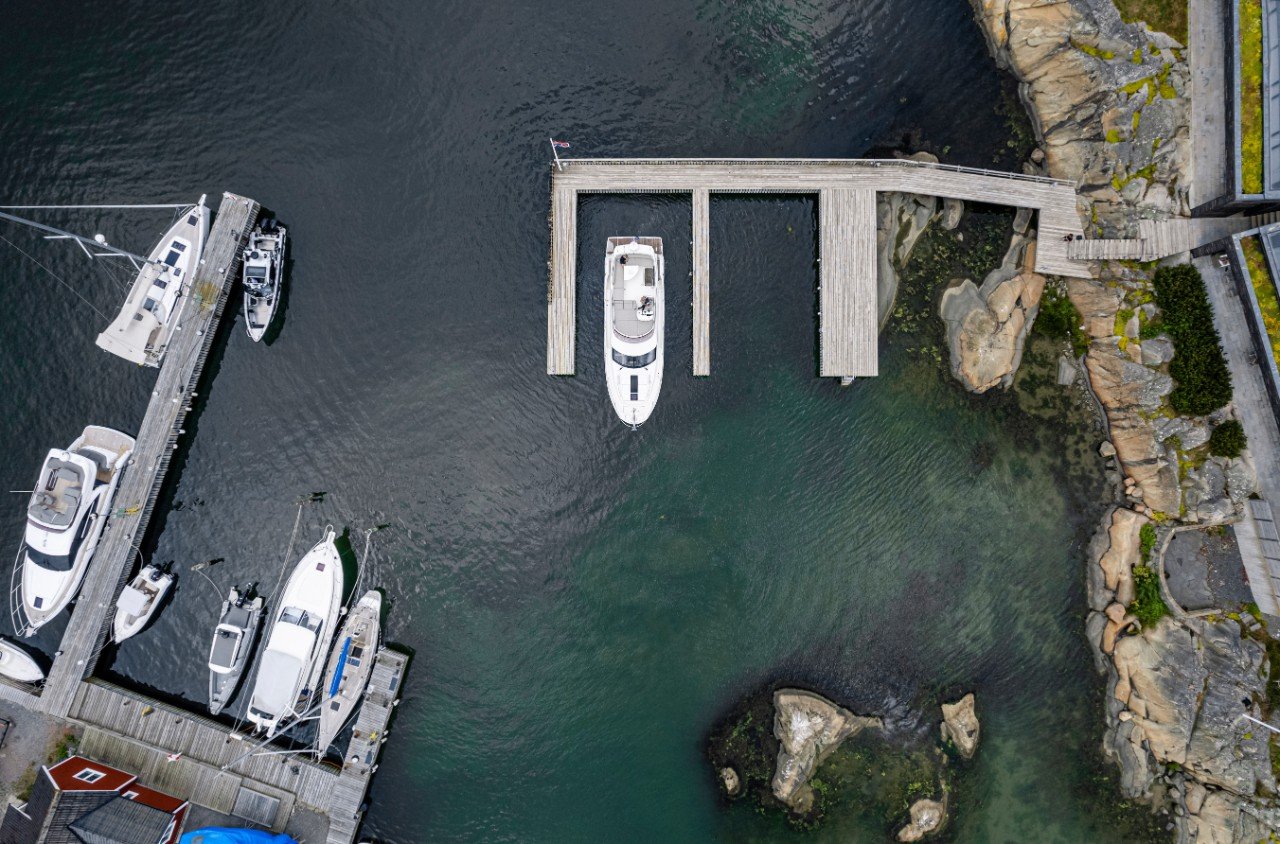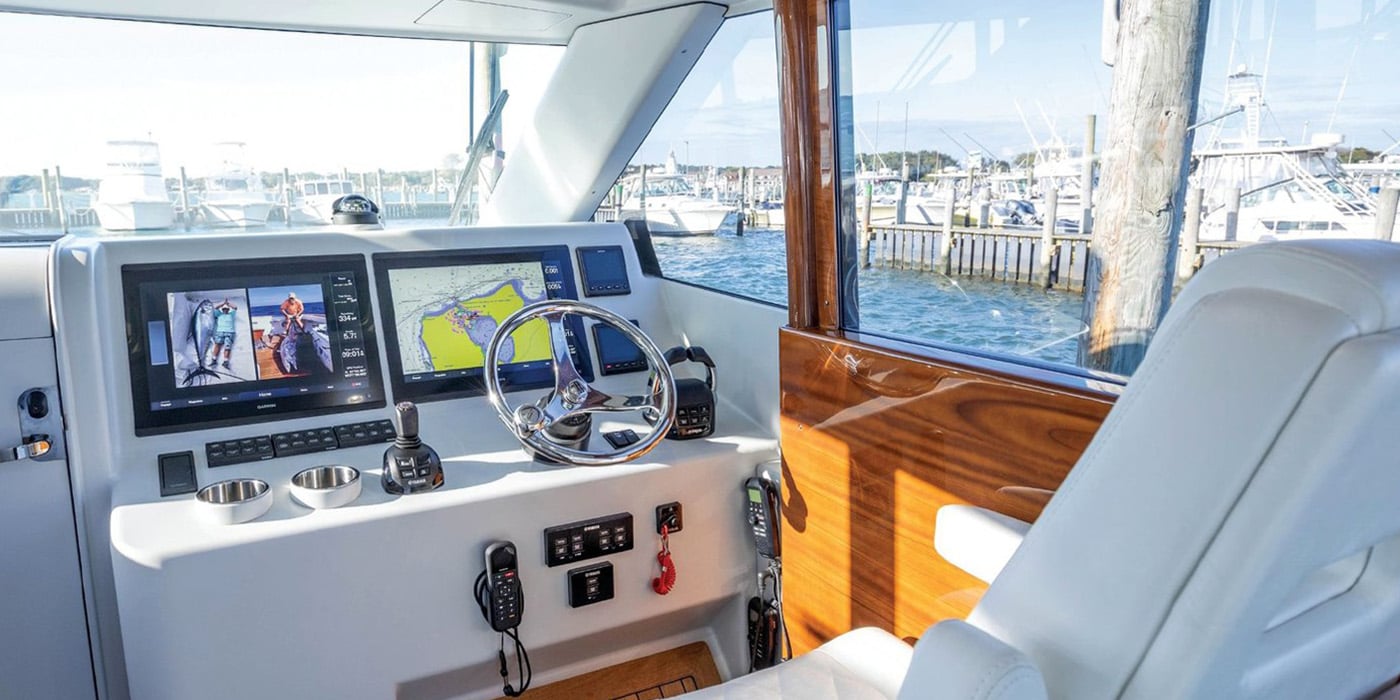
Jimmy Buffett’s Custom-Built 42-footer Includes Full Complement of the Latest Garmin Technology
By Charlie Levine, OUTBOARD magazine
A pilothouse with windows that go up and down as opposed to side to side, shock-absorbing seats and a retractable awning. Those were the three must-have items Jimmy Buffett requested when he sat down to draw out his next fishing boat. But what he ended up with is one of the most unique sportfishing vessels to hit the rip in a long, long time.
To make this boat a reality, Jimmy and his longtime captain, Vinnie LaSorsa, reached out to Freeman Boatworks, builders of the most sought-after, high-speed catamaran center consoles on the market, and Merritt Boatworks, a venerable custom builder of sportfishing yachts. They asked these revered builders to do something quite a ways out of their wheelhouse — take a 42 Freeman hull and install a custom, Merritt-built house.
“When we were first approached about doing this project, I tried to sough it off because it’s not what we really do, but they kept working on us,” says Roy Merritt, owner of Merritt Boatworks. “After a while I said ‘Alright, we’ll build it, but I want to draw it.’ It ended up being a really fun project. Sometimes, if you’re like me, you like to do something different. This was an interesting project and very satisfying. The boat came out very nice.”
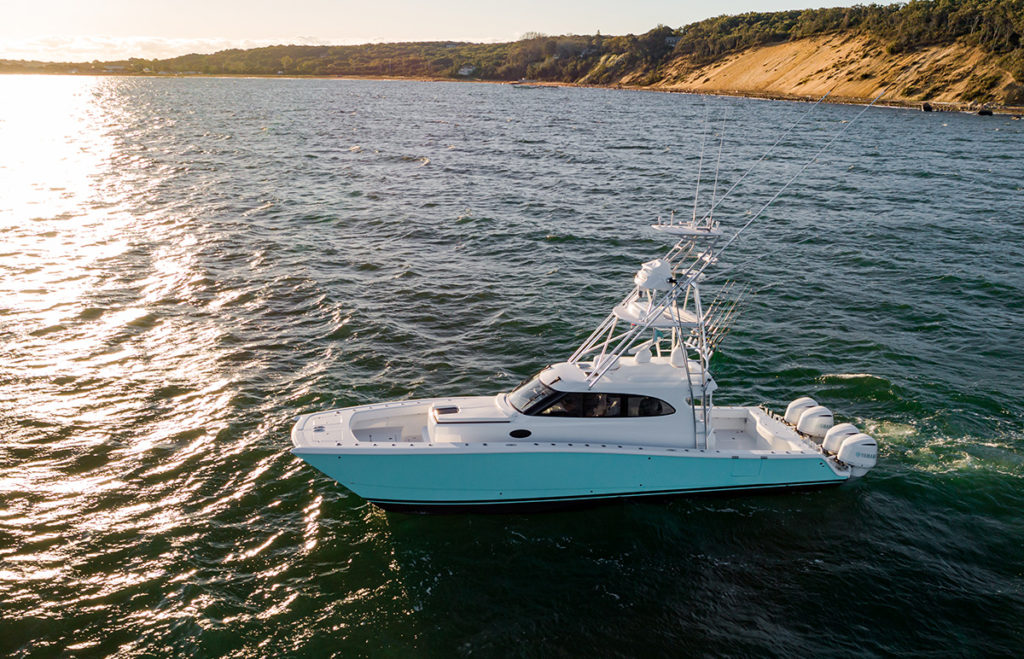
Putting a house onto a 42 cat with the mean, sexy lines of a Freeman, and getting it to look right, is no easy task. A pilothouse can give a boat a commercial presence with boxy corners and squared glass. However, a pilothouse makes a lot of sense for boaters in colder climates who like to push their season to the very fringe of what is considered comfortable cruising weather. A bit of shelter comes in handy when the bluefin tuna are biting south of Nantucket and the water is in the 60s. The same could be said when escaping the heat while trolling the edge of a cobalt blue drop-off in the Bahamas. And those are two of Jimmy Buffett’s favorite spots to fish.
Freeman experimented with a pilothouse model several years back and built one 33-footer with an enclosed helm, which just so happens to be owned by a certain musician who likes to croon about pirates and sailors. At the time, Jimmy was about to repower his 42-foot Rybovich, so he’d be without a fishing boat for a few months, and he didn’t want to miss the summer season.
“We were looking for an interim boat, and I said to Mr. B that I’d love to take a look at a Freeman,” LaSorsa says. Jimmy said that he’d like to see a Freeman with a pilothouse. LaSorsa knew that Billy Freeman had built one pilothouse cat and approached the builder about making a second one. That idea got shot down; the project would take too long and would slow down production. But LaSorsa knew Freeman had built a 33 with a house so he reached out to everyone he could think of to track down the owner of the boat. And he found him.
“Through mutual friends, texting everybody and putting together pieces of information, I found the boat at Outer Banks Marina in Wanchese, North Carolina,” LaSorsa recalls. “I called the marina and asked to speak with the boat owner. I didn’t tell them who I worked for. I just said I was interested if the owner wants to sell the boat.”
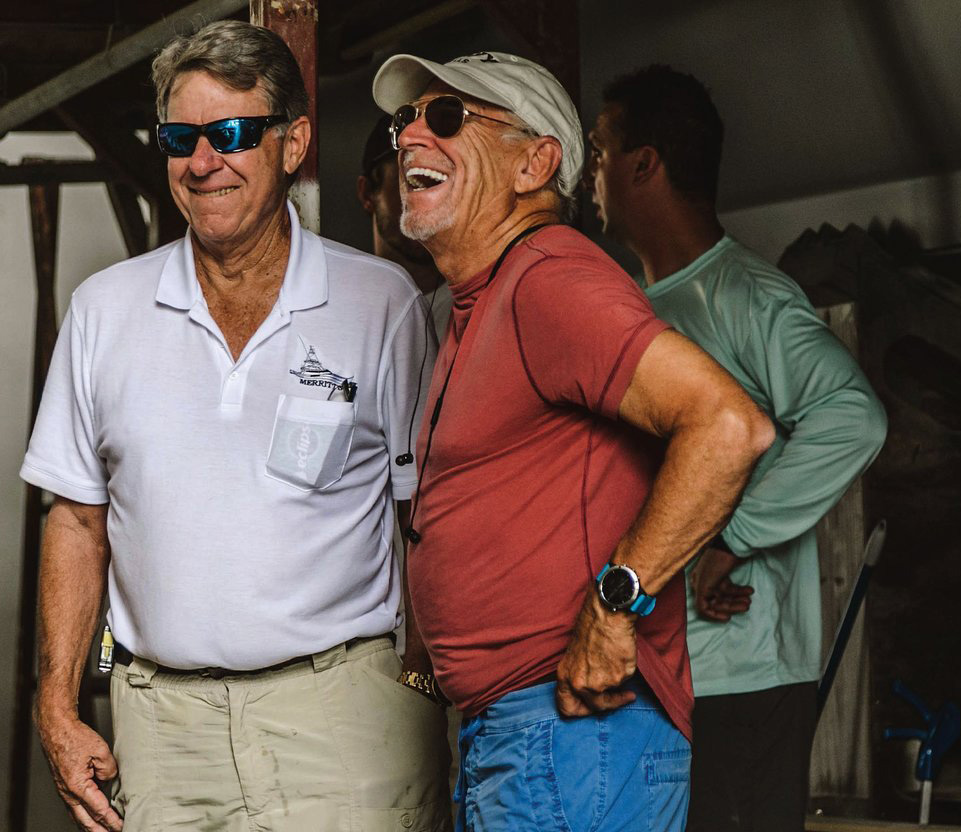
About a week later, Tim Anderson, the boat’s owner from Virginia, called LaSorsa back and said his son and fishing partner was having a baby and he’d consider parting with the boat. Jimmy and LaSorsa went to meet the owner and check out the boat. They spent an entire day going through the vessel and talking with Anderson, asking him what he loved about the boat and any things he’d change.
“That whole first day Tim had no idea it was Jimmy Buffet,” LaSorsa says. They were just two guys chatting about boats. “Later on that night, I texted Tim a picture I took of him and Jimmy sitting on the covering board talking. He texted back: ‘Thanks, cool pic. BTW I meant to ask you, what does your boss do?’”
LaSorsa responded, saying his boss was a singer, and Anderson asked what kind of singer. LaSorsa fired back: “He sings Margaritaville, Cheeseburger in Paradise …”
“He called me instantly and said ‘Shut the f— up!’”
Needless to say, they got the boat, which already had a seafoam green hull. It was like it was meant to wear the name Last Mango, which Jimmy had used on a number of vessels.
They outfitted the 33 Freeman in Florida and ran it to Montauk, New York, where they spent the summer chasing striped bass and tuna. “We had a great time fishing it,” LaSorsa says. “The 33 is a great little boat. At the end of the summer we had the idea of building a bigger version of the pilothouse Freeman, and that’s when we started drawing it up.”
After a couple of meetings with Billy Freeman and the company’s vice president, Scott Cothran, the plan began to come together.
Freeman agreed to send a 42 hull down to Merritt’s boatyard in Pompano as a template. The boys would tape out where the house would go, and Merritt would draw up the plans.
“This project was not something we traditionally do,” Cothran says. “This was a very educated client. They came to us and it wasn’t just ‘Hey we want to do this.’ It was more like ‘This is what we want to do, and this is how we want to do it.’”
Click here to read the spring 2020 edition of OUTBOARD magazine.
Freeman provided the hull and deck, and hung the quad Yamaha 300-hp engines on the transom. The lid design was changed up to accommodate the house, and when it showed up to Merritt’s yard in Pompano, Florida, the catamaran was basically a blank canvas.
Merritt’s design team nailed Jimmy’s vision on their first attempt. “We didn’t change a thing, which is pretty remarkable,” LaSorsa says. “Our vision was classic and simple, which is really what a Merritt is. That’s what they do there.”
Merritt had a mold cut and built the house using lightweight carbon, core and epoxy. The benches inside the house are part of the structure and the entire house was glued to the deck to keep it stiff. This avoids stress cracks and other inherent issues.
The main concern, however, was weight. How would the additional weight of a custom house, a bunk, extra battery banks, fridge, freezer, a head, a 16,000 BTU AC unit and a tower with a second station affect the ride?
The house came in at just 875 pounds, minus the windshield. The custom Pipewelders tower was less than 500 pounds. “We didn’t put a scale on the tower,” LaSorsa says, “but we easily moved it with three guys.”
Weight was also the deciding factor as to why they chose to go with 300-hp Yamaha outboards as opposed to 350s. The 350 weighs roughly 230 pounds more than the 300 and with the Freeman hull, they didn’t need the extra torque to hop up on plane. So they opted for 300s and saved almost 1,000 pounds.
All told, LaSorsa figures they added 2,300 pounds to the Freeman, but it only slowed the boat down a couple knots. “We cruise at 40 mph at 3,900 rpm and top out at 60,” LaSorsa says. “That’s not cheating. That’s with no tide behind us. It’s an honest 60 on the button.”
A typical 42 Freeman cruises at roughly 40 knots at the same rpm and tops out in the mid-60-knot range. So yes, there was some speed loss, but it’s also coming from windage. A few clicks on the speedo is nothing when you consider what they’ve gained, and Jimmy is more concerned about ride and comfort than top-end speed. “This boat eats up a head sea,” LaSorsa says. It also has the range they need to find fish. Last Mango holds 800 gallons of fuel and gets .7 mpg when full and .8 when running light. These guys could run from Nantucket to Bermuda if they slowed it down a bit.
While Jimmy’s must-have list only included three items, his custom touches are all over the boat.
The minute you step on board you spot little details that clearly show the vessel is owned by a man who has spent a lifetime tooling around on boats. There are magnets on the undersides of hatches to hold knives and pliers. Tackle and cleaning supplies are organized in custom-made Starboard cutouts so nothing rolls around in transit. Side hull doors that swing inward so guests (and dogs) can easily board from a floating dock, or after a swim. There are a staggering 58 rod holders on the boat, because you can fish from just about every inch of this walk-around. And you can never have too many rods on board, right?
The space in the house is maximized for guest comfort, visibility and storage needs.
“Jimmy laid out the design of the pilothouse interior, the length of the benches, the height of the backrest, the bunk,” LaSorsa says. “He actually raised the height of the seats so when we’re running everyone can see out the window.” And yes, the side windows open and shut vertically, using Lenco electric rams, so you can crack the window and it won’t creep as sliding windows tend to when the boat’s running.
The extra few inches of height Buffett requested on the benches also provides more storage space. One bench houses fridge and freezer compartments. The other holds an organized selection of tools, safety equipment and fishing tackle.
The boat is rigged and ready for just about any fishing situation you could throw at it, from casting for striped bass to deep-dropping for swordfish. They combined the two live wells in the transom into one massive, 150-gallon insulated box with an aerator so you can stick a 50-plus pound wahoo in there, or keep your baits alive and kicking even if you caught them offshore and end up back at the dock where the water is five degrees warmer.
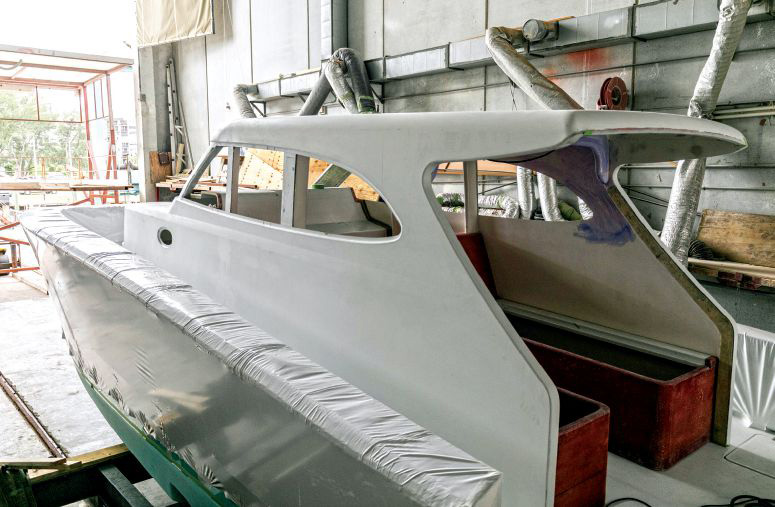
They also swapped out the clear lids for fiberglass ones. The clear material scratches when people sit on it, especially if they’re wearing jeans with buttoned back pockets, and that doesn’t jive with LaSorsa’s meticulousness. There are two more insulated 70-gallon live wells that can also be used as fish boxes.
A retractable SureShade awning extends off the top of the house almost all the way to the transom. The shade is narrower than the width of the cockpit because of the beam of the house, but Jimmy loves that because when you’re fishing you can bring the rod tip up and not worry about hitting anything. There’s still plenty of shade and if the tropics are cooking you to the core, it’s only a step or two to the air-conditioned house.
Surprisingly, the boat does not carry a genset. It runs everything through two banks of lithium-ion batteries and two inverters. While lithium batteries are lighter and smaller than conventional batteries, they also last 30 percent longer and charge 30 percent faster. Lithiums will also maintain 12 volts at up to a 90-percent discharge. Conventional batteries will slip below 12 volts at 60-plus percent discharge. That’s key because it takes a lot of juice to run a fridge, freezer, AC and the amount of electronics found on this boat.
“We haven’t run them dead yet,” LaSorsa says. “I left Charleston in bad weather and ran the ICW to St. Augustine with both radars, freezers and compressors running. We were only down to 11.6 volts after nine hours of running and I didn’t touch the second battery bank.”
Throughout the house, you can’t help but notice the Merritt touch.
The wood veneer panels that frame the windows shine like a newly minted penny. The wood grains match perfectly. Soft lines and radius curves give the space a smooth, open feel. The use of natural light in the tight quarters of the cuddy cabin illuminates the bunk and head. There’s also the Jimmy touch, with the “fins up” Last Mango logo on cushions, pillows, under hatches, the switch panel and a few other very tasteful spots that you don’t even notice at first, because the logo seems like it belongs there.
Another thing that is not taken lightly on this boat is the sound system. The team from JL Audio showed up with microphones to test levels inside the house and around the deck. The data they collected is used in a process called digital timing, so the sound coming out of the bow, helm, cockpit and tower all hits your ears at once. The end result is perfectly mixed to play the country and reggae music that Jimmy prefers to listen to when fishing.
At the helm, there are two Shockwave seats (as requested) and a full complement of the latest Garmin technology. Two 17-inch Garmin 8617 MFDs dominate the dash and run the new EmpirBus switching system. From the MFD, the captain can control all ship systems down to the ball valves used to fill the forward ballast tanks that Freeman installed to bring the bow down in a head sea. The captain doesn’t have to manually open the valves, just tap the MFD and the icon on the screen will change when the valve is open to show if water is flowing or not. Pumps, aerators, AC, lights, horn, wipers—they’re all controllable through the EmpirBus.
There is a Yamaha Helm Master joystick on the main helm as well as the upper station. This lets the captain slide the boat sideways to the gas dock, hold position and drift in various configurations.
LaSorsa says he loves the maneuverability the Helm Master provides, but the Freeman drifts so nicely that he often doesn’t need the various drift-set functions when fishing. When asked what his favorite feature of the boat is, LaSorsa answers quickly.
“I like being in the enclosed house,” he says. “You don’t feel the wear and tear you feel when running a center console and cruising so fast. On those boats, you feel like a cocker spaniel in the back of a pickup truck on the highway. On this boat, you don’t get any of that. There’s no wind burn. It’s quiet and soft. You can hear each other. It’s easier on the body.”
There is much to love about this boat. The way two leading boatbuilders from very different segments of the market came together to create the vessel is, by itself, remarkable. But it was all because of one man’s vision.
It just so happens that this particular man is Jimmy Buffett.
